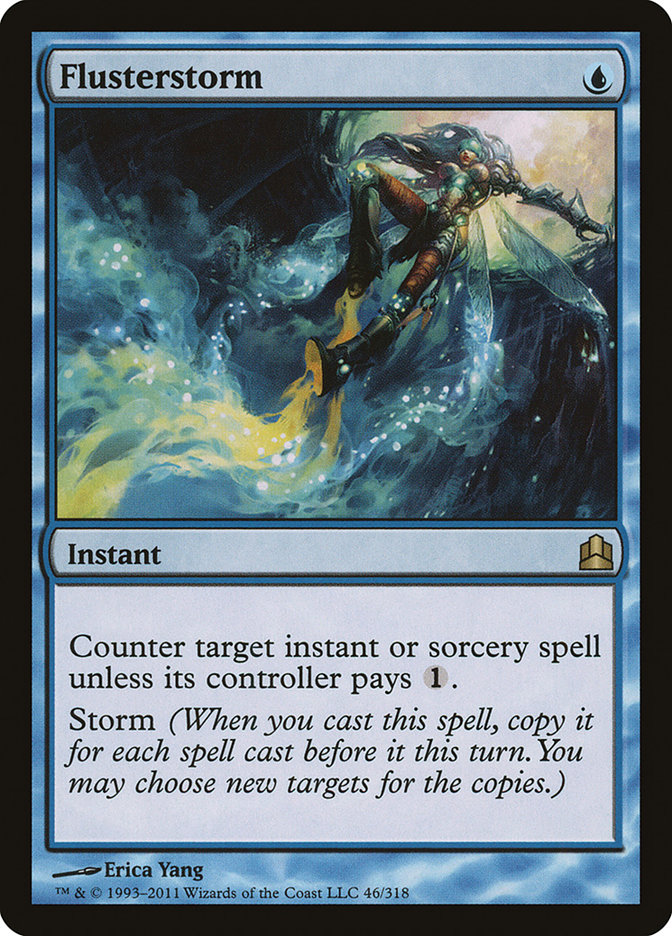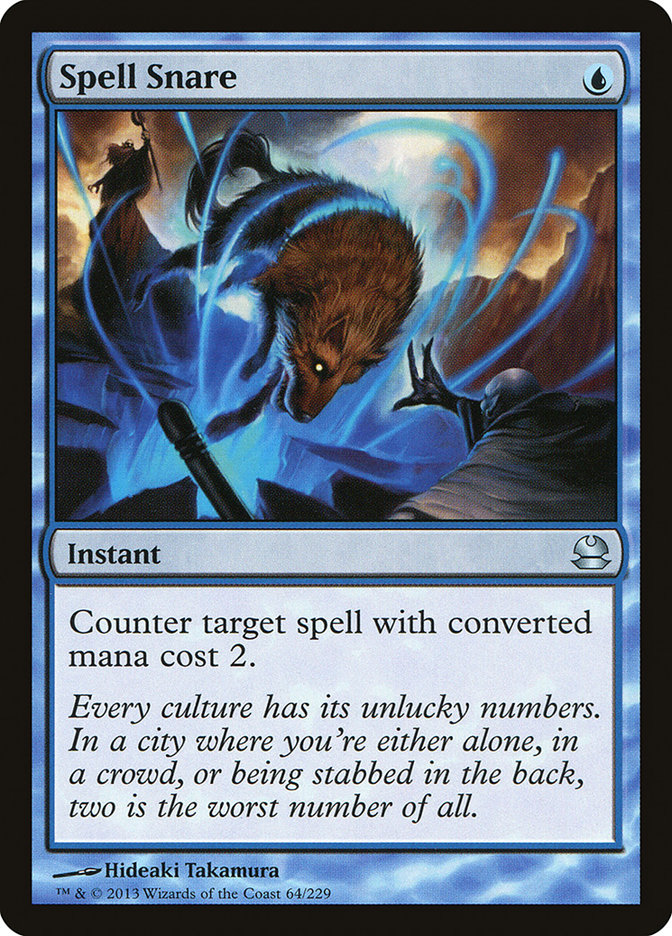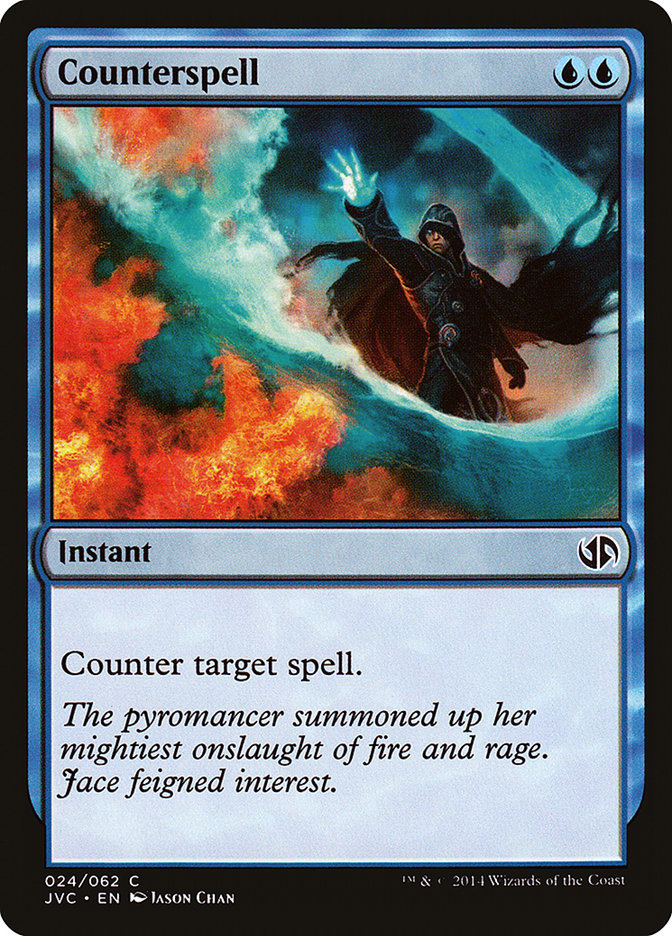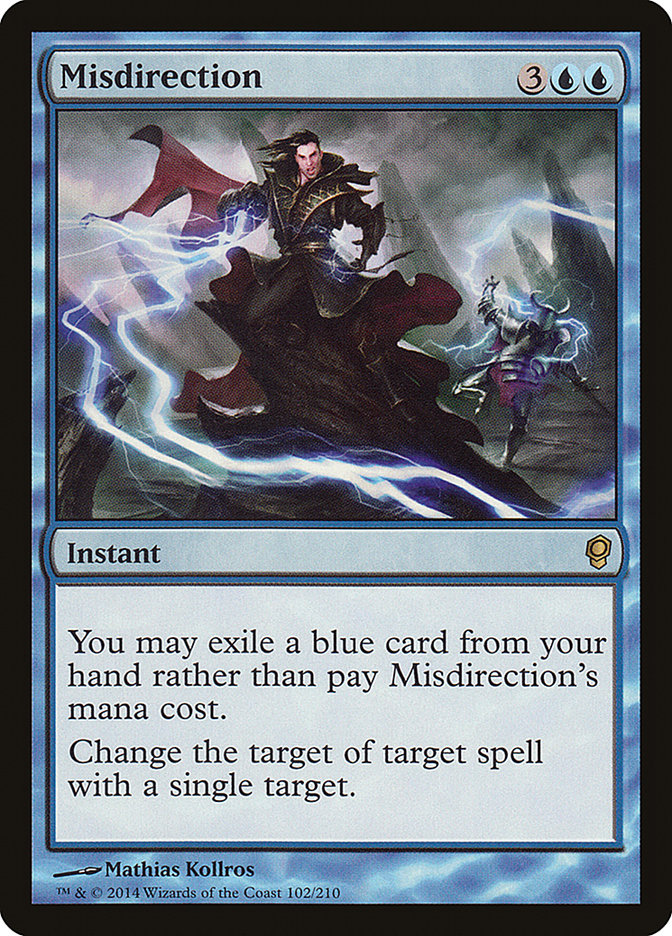While watching the Pro Tour this past weekend, I kept having the same thought:
“Dig Through Time is so absurd.”
I watched people resolve it, take two unbelievably good cards, and never come close to losing. I watched people chain Dig into Dig into Jace’s Ingenuity.
Ahead, behind, at parity — it didn’t matter, Dig Through Time would tilt the game in its caster’s favor in a serious way.
The only dedicated Dig Through Time deck in Legacy to date has been the Thopter Foundry deck that Gerry Thompson thought up, I wrote about and made a video
of, and Chris Andersen has been playing to considerable tournament success (an Invitational top 4 in Richmond and a top 16 in Indianapolis back in late
January). That deck is super sweet, don’t get me wrong, but after watching people cast instant-speed draw spells that cost
five
,
six
, and
eight
all weekend, I’m less about assembling two-card combos and more in the mood to grind people out with Dig Through Time.
Tundra-based grindhouse strategies and me go way back, all the way to the first weekend when Mental Misstep was legal. Back then, the best deck was a
Sultai-flavored Delver-looking deck that preceded Delver’s existence called Team America. It played Tarmogoyf and Tombstalker with a ton of cheap
disruption and four Hymn to Tourachs. I was dead set on playing a variant of that deck before Gerry showed me the most beautiful thing I had ever seen: an
old-school U/W Control deck with four Standstills, fifteen counterspells, and four Jaces. We put together two copies, I beat every Team America opponent I
faced, and I narrowly lost in the semifinals, barely missing the perfect one-two finish with Gerry taking down his side of the bracket. I then took a very
similar version of that deck to Grand Prix Providence and barely missed making top 8.
Planeswalkers (4)
Lands (23)
Spells (33)

I guess what I’m saying is that I have a lot of love for a deck that tries to out-card its opponent with blue draw spells, counterspells, and Jace. So what
are the existing obstacles to that happening? Why aren’t pure attrition strategies running the show in Legacy?
Reason 1: Combo Decks
It turns out that attrition decks work best when people attack you on one, maybe two predictable axes. In the Mental Misstep era, it was just a lot of
discard spells and creatures. Very few people played combo because the best deck in the format was this incredibly antagonistic deck that had counters,
huge two-mana creatures, discard, and Wasteland. No matter what angle you took, something bad happened to you. It was ugly.
That isn’t true nowadays. Hymn to Tourach sees far less play, even in the Sultai decks that have historically wanted it, because those decks are bluer than
they are black. Combo decks are serious players in any Legacy tournament, and they run the gamut from Storm to Infect to Dredge to Show and Tell. Relying
solely on the most traditional forms of attrition — removal and various counterspells — will create some major holes in our gameplan for combo decks to
exploit. Obviously, it would be nice to be able to play eight one-mana removal spells and four Snapcaster Mages and call it a day, but we’re going to have
to work a little harder than that on the deckbuilding front.
Reason 2: The Creatures are Better
It’s not just True-Name Nemesis, either. Deathrite Shaman is a pain to play against, Shardless Agent gets its two-for-one every time, and Mother of Runes
threatens to make a metagame comeback every so often. Creatures are more resilient to removal, do more to impact the gamestate beyond their power/toughness
line, and are broadly more antagonistic to various control gameplans. When they are puny and weak, they often bring protection — Nimble Mongoose has
shroud, Glistener Elf has Vines of Vastwood, and decks of all (secondary and tertiary) colors play Daze and Spell Pierce to run interference on Swords to
Plowshares and Lightning Bolt. Killing things just isn’t as easy as it used to be.
Reason 3: Better Endgames
Sometimes, decks don’t care about how much card advantage you can amass because they have Life from the Loam recurring Dark Depths and Thespian’s Stage
with a Manabond in play, and you’ll run out of Swords to Plowshares eventually. Alternatively, they’ll just Punishing Fire you out over…and over…and
over again. Or they’ll hardcast Emrakul, the Aeons Torn because they have four Cloudposts in play. No matter how a deck chooses to go bigger, there are
definitely ways to go bigger than Jace, the Mind Sculptor plus five counterspells.
Of course, none of these factors are a fatal flaw. Rather, each one is a design constraint that should inform our deckbuilding. It would be too easy
otherwise — we could just rerun the quad Repeal special from 2011 and be done with it! Everyone would do it!
History can often teach us how to approach some problems, but it rarely provides entirely metagame-appropriate decks. We have to get creative every time we
want to play a reactive deck, lest we get stuck with a bunch of clunkers against Daze and Spell Pierce or with a bunch of targeted removal against Nimble
Mongoose and Emrakul, the Aeons Torn. Landstill was a sweet deck in 2007 or whatever, but Cunning Wish into a toolbox of answers has been outmoded for some
time now. Time to redesign the classic attrition deck from the ground up.
For starters, we should grab all the obvious cards:
Those nineteen cards are inviolable. At the point where we don’t want four Jaces, we shouldn’t be playing a deck that gets better every time we activate a
Jace. Within this paradigm, though, our deck is going to set up gamestates where our Jace is excellent and compounds the advantages that it creates.
I’d like to go off on a tangent for a second and talk about the importance of starting from your own first principles when building a deck.
At the point where your starting point is someone else’s finished decklist, you are horribly tainting your own creative process. Your end result may end up
looking quite a bit like theirs, but studying their list before thinking through your own is a great way to bias your thought process by giving it anchors
that it may not want at all. By establishing your own goals and building a deck from the ground up that you believe fulfills them best, you are far more
likely to find a better solution than if you started with someone else’s list.
Want to know why?
Because in the absolute worst case scenario, you end up going through your process, getting to the end, looking at their list for fine-tuning inspiration,
and concluding that your deck is an inferior version of theirs on its core axes. That rarely happens, but it is a possibility. And that’s fine, because you still went through the correct process.
All of this is to say that I am acutely aware of Carsten Kotter’s U/W/x Dig Through Time control deck, I read his articles in October and January, and I’m
not going to link to his decklist until I’m done with this process. It would have a strong prejudicial effect on how the rest of this deck gets considered,
and it’s far better to consider it at the end of the process.
Okay, back on track. We know that we want to play those nineteen cards. The fourth Dig Through Time is a little weaker than the other nineteen cards, which
is why we aren’t putting it in the same class as “the fourth Brainstorm” or “the fourth Force of Will.” It is likely that we end up playing four Dig
Through Times just because we lean on it pretty hard as our instant-speed card draw. Not being able to chain them effectively is a concern, but we also
have alternatives that may allow us to only play three Digs.
At this point, we need to think about what — if any — third color we want to play. The benefits of each color are as follows:
Green
offers Life from the Loam and any number of reasonable creatures. Knight of the Reliquary could fuel delve and find sweet lands to mess with our opponent’s
plans, Tarmogoyf is a solid blocker in the earlygame, and Deathrite Shaman’s green-mana activation is a relevant hoser against Dredge and Reanimator while
also serving to accelerate us through an early game where we’re going to be very vulnerable. Ultimately, I don’t think green offers us enough for what it
costs us, as the green spells are weak and replaceable, while playing various green creatures turns on our opponent’s removal unnecessarily.
Black
offers Lingering Souls, discard spells, some great options on removal (Zealous Persecution is nice against Infect, Young Pyromancer and friends, Mother of
Runes and friends, and Wirewood Symbiote and friends, while Innocent Blood is the best possible removal spell against Nimble Mongoose and True-Name
Nemesis). Plus it has some sideboard killers like Perish and Engineered Plague. The most appealing part of black is the diversity of removal, which Dig and
Jace play into well. It’s worth going down this road, I think, but let’s leave it for another day.
Red
offers Lightning Bolt as a backup one-mana removal spell, but options dry up pretty quickly after that. The best sideboard card in the format is and has
always been Pyroblast/Red Elemental Blast, so we want to play Jeskai Dig in a world where Bolt and Blast both excel. Wear//Tear is obviously good as well,
but the one-mana spells are where the real money is.
I think there are two reasonable takes on this idea: a Jeskai list that’s more anti-blue and better against fringe decks because of Wear//Tear, and an
Esper list that’s more anti-creature and better against graveyard decks and tribal decks because of the black sideboard cards. For today, let’s stick with
the Jeskai version.
We’re playing four Lightning Bolts, because in a world where we want a Lightning Bolt, we better not stop at just the first one. We’re playing Lightning
Bolt so that we never have to face down an Insectile Aberration without a removal spell in hand. We’re playing Bolt so that Deathrite Shaman never lives.
We’re playing Bolt so that we can kill their Jace when they immediately Brainstorm with it on turn 4. Sure, it’ll be bad sometimes, but so will every
single other card in our deck. And we don’t want to maybe draw one on turn 7, either; we’re just fine with having two in our opening hand. That’s how this
deck has to work for us to want to play it. Is that too many? Yeah, maybe, but who writes down “Lightning Bolt” and doesn’t immediately put a “4” next to
it? Have you ever written down “Lightning Bolt” on a decklist? Anyways.
So what are we doing besides sitting here and frying up some insects and retraining Young Pyromancers as farmhands, you ask? How are we beating combo
decks, you ask? Good questions. We can’t really expect to just slam a Jace and tick it up five times against a combo deck that can’t piece together a kill
by turn 9 — we’ll have to play some honest to god countermagic and hand disruption.
The hand disruption is pretty obvious to me: We want a real number of Vendilion Cliques (probably three) so that we can curve Clique into Jace against
combo and survive to our next turn. Clique is also great because it’s not the sort of card that a Storm player can reasonably Cabal Therapy, so it ends up
sitting around in our hand for a while and then allowing us to cast an instant-speed Duress during their combo turn. Not a bad way to approach that
matchup, really.
A similar dynamic exists with Snapcaster Mage: So long as we have enough mana up, our hand is immune to a discard spell from Storm or Reanimator because we
can just spend that mana Snapcastering our counter instead. Snapcaster is obviously quite a bit worse against decks like Show and Tell that actually make
you cast your counterspell, but Show and Tell is also not the most popular combo deck nowadays. That Snapcaster is powerful when combined with a bevy of
one-mana removal spells needs little explanation.
Let’s pencil in three of each flash creature along with four Lightning Bolts. That brings us to 29 cards that we know we’re playing in our deck. Since
we’re going to be pretty good at playing at instant speed with six flash creatures in our deck, I’d like to maximize that playstyle with the rest of the
card selection. Ponder can be Thought Scour, we should eschew Gitaxian Probes, and so on. If we’re diligently working to not tap out, we shouldn’t have
cards that make us tap mana on our turn for small marginal gains. Sure, Ponder may be a serious gain over Thought Scour in the abstract, but its edge
closes quite a bit when you have Snapcaster for your milled cards and Dig Through Time waiting to delve away your chaff.
Our land count is going to be a very relevant factor in our remaining deckbuilding consideration, so we should figure that out now. We definitely want more
than twenty land — that’s how many a land-heavy Delver deck plays — and we don’t want more than 24. Most Miracles decks play 23, and I’m not worried
about flooding out in a world where we’re planning on casting Dig Through Time a lot. Let’s start with 23 and not be afraid to add a 24th.
Once we know that we have 37 spell slots, we can make some more rigorous calls about our remaining card choices. Between Lightning Bolt and Swords to
Plowshares, we’re good on pinpoint removal. I’d like to play a single Supreme Verdict as a way to get out of the more egregious messes, but no other
removal spells in the maindeck.
With seven spots left, we need to fill in our card draw, our cantrips, and our countermagic. We’re going to end up light on this aspect of the deck, and we
may end up cutting the fourth Lightning Bolt to compensate, but we’re not there yet. In keeping with the spirit of the deck’s instant-speed nature, I want
to play a miser’s Fact or Fiction to fuel delve as well as Snapcasters. It makes us a little four-heavy, but it also gives us a way to get ahead in spots
where we can’t reasonably tap out for Jace.
Six spots left. We should play a few Thought Scours. Four is probably too many for a deck that has as weak an earlygame as this one, but we may end up
being short on actual velocity. Let’s flag the potential shortage of actual cantrips as an issue and come back to it in testing should it prove to be a
real problem.
Four spots left. All of these have to be counterspells or we’re going to get run over by every combo deck in town. We might end up getting run over by them
enough to steal the Bolt slot, but we’ll start with four. We want a variety because Dig and Snapcaster both reward diversity. Is it unreasonable to play
four singleton counterspells? I can think of four viable ones that all have conditions that I’d want in various circumstances:
We want at least two one-mana counters, at least two two-mana counters, and a fancy-pants counter, so this roughly fits the bill. Given how few counters we
actually have, let’s double up on actual Counterspell. We’ll still have eight removal spells after cutting the fourth Bolt, and having more to do on turn 2
will be good.
Our spells, then, look like this:
Ten permanents, ten draw, eight removal, nine counters. Not a bad mix, probably a little heavy on the permanents, but we can trim that down as needed.
Having productive things to do on turns 2 and 3 is what concerns me the most, and Snapcaster/Vendilion provide those things.
How are we casting these cards? Well, we obviously want a lot of fetchlands to fuel delve and shuffle with Jace, but we also want enough actual lands that
we don’t run out of things to fetch when we get Thought Scour and Fact or Fiction going. I’d prefer to stick to the bare minimum on basics — just an
Island and a Plains — and board in a Blue Elemental Blast and some Wear//Tears against any Blood Moon haterade chuggers that may show up to the
tournament.
The rest of the manabase sort of builds itself. We can afford a Plateau when we have 23 lands and only two of them aren’t blue. We want to max out on the
relevant duals. We still have room for twelve fetchlands, which is plenty to fuel delve. Like, I said, it builds itself:
4 Tundra
1 Plateau
1 Island
1 Plains
Our sideboard is going to follow the same basic philosophy as our maindeck: emphasize diversity, have cross-functional cards, and give yourself choices at
many points in the game. The only real exception to that rule will be playing a lot of Pyroblasts, because blue mages are the worst, amirite?
1 Null Rod
I could write an entire article about why I want each of these sideboard cards, but I’ll stick to explaining the ones that you’re probably raising your
eyebrows at.
Sudden Demise is the best Pyroclasm in a world where your creatures are small and blue and their creatures are small and not-blue. Obviously it’s worse
when they curve Delver into Stoneforge Mystic into Young Pyromancer, but that’s not what Sudden Demise is here for. It’s here to clean up white and green
1/1s while leaving your Snapcasters and Vendilion Cliques unscathed.
Telemin Performance is a deep and abiding love of mine from the days when I would play Jhoira Basic against Tim Aten and Ryan O’Connor and Tom Ma and just
pray to hit Telemin Performance every single time. After that, I justified my willingness to play it in Legacy as a reasonable countermeasure to Lands and
Storm and even Reanimator. It’s definitely a five-mana instant win against those decks, but I don’t even know if that’s good. For nostalgia’s sake, let’s
say it is and you can cut it when you play the deck.
I’m not justifying Baneslayer Angel, just go play it against a Sultai opponent and get back to me with how you did.
Null Rod is one of the only cards I could think of that would be good against both Storm and Miracles in a meaningful way. It also has applications against
Imperial Painter, where it can shut off their kill even if you’ve been Blood Mooned into oblivion. Ideally, the hilarity continues when they try to
Pyroblast it, and you can fight back with your Pyroblasts, but that rabbit hole goes pretty deep. Suffice it to say that Null Rod can do some things in
Legacy.
With all of that out of the way, here’s what our final deck looks like:
Creatures (6)
Planeswalkers (4)
Lands (23)
Spells (27)
- 4 Brainstorm
- 3 Lightning Bolt
- 2 Counterspell
- 4 Force of Will
- 4 Swords to Plowshares
- 1 Misdirection
- 1 Fact or Fiction
- 1 Spell Snare
- 1 Flusterstorm
- 2 Thought Scour
- 1 Supreme Verdict
- 3 Dig Through Time
Sideboard

If you have thoughts on this deck, I’d love to hear them. If you want to express your sheer unbridled hatred for this deck, you can find me on Twitter.




